 |
Omicron
4.2.0
An algorithm to detect and characterize transient events in gravitational-wave detectors
|
 |
Omicron
4.2.0
An algorithm to detect and characterize transient events in gravitational-wave detectors
|
Program to compare two omicron trigger sets. More...
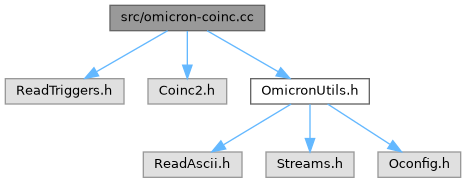
Functions | |
| int | main (int argc, char *argv[]) |
| Main program. More... | |
| void | PrintUsage (void) |
| Print the program usage message. More... | |
Program to compare two omicron trigger sets.
omicron-coinc is a command line program to compare two trigger sets. A time coincidence between the 2 trigger sets is performed. By default the list of coincident events is printed in the standard output. For example:
omicron-coinc channel1=[channel name] channel2=[channel name] gps-start=[GPS start] gps-end=[GPS end]
This command assumes that omicron trigger root files are saved in a standard place pointed by the environement variable $OMICRON_TRIGGERS. It is also possible to use specific trigger files:
omicron-coinc file1=[trigger file pattern] file2=[trigger file pattern] gps-start=[GPS start] gps-end=[GPS end]
where [trigger file pattern] can contain wild cards. For example: file1="/path1/to/triggers/*.root /path2/to/triggers/*.root".
Additionnally, one can print the triggers which are not found in coincidence. For example, for the first trigger set:
omicron-coinc channel1=[channel name] channel2=[channel name] gps-start=[GPS start] gps-end=[GPS end] print-list-nocoinc1=1
It is also possible to print diagnostic plots with the option: print-plot-coinc=1.
Let's perform the coincidence between 2 channels (V1:LSC_DARM and V1:Hrec_hoft_16384Hz) over 6 hours of data:
omicron-coinc channel1=V1:LSC_DARM channel2=V1:Hrec_hoft_16384Hz gps-start=1266969618 gps-end=1266991218 ********************************************************************* coinc_0 V1:LSC_DARM: t=1266970234.90625 s, f=3.34949 Hz, snr=9.01751 V1:Hrec_hoft_16384Hz: t=1266970234.95312 s, f=149.80423, snr=8.09652 ********************************************************************* ... ********************************************************************* coinc_15 V1:LSC_DARM: t=1266988209.89355 s, f=1887.11766 Hz, snr=7.54301 V1:Hrec_hoft_16384Hz: t=1266988209.89160 s, f=1914.72933, snr=7.78166 ********************************************************************* Valid livetime = 21592.00000 s Coincident livetime = 21592.00000 s Number of valid clusters for channel 1 = 78 Number of valid clusters for channel 2 = 91 Number of coinc clusters = 16
In this example, 16 clusters are found in coincidence out of 78 for V1:LSC_DARM and out of 91 for V1:Hrec_hoft_16384Hz. The parameters for these events are printed for both channels.
Let's perform the coincidence between 2 channels (V1:LSC_DARM and V1:Hrec_hoft_16384Hz) over 6 hours of data:
omicron-coinc channel1=V1:LSC_DARM channel2=V1:Hrec_hoft_16384Hz gps-start=1266969618 gps-end=1266991218 print-list-coinc=0 print-list-nocoinc1=1 V1:LSC_DARM: t=1266970228.17969 s, f=346.09037 Hz, snr=7.00438 V1:LSC_DARM: t=1266970327.68750 s, f=7.95789 Hz, snr=7.72376 ... V1:LSC_DARM: t=1266989603.15137 s, f=1585.80320 Hz, snr=7.80582 V1:LSC_DARM: t=1266990803.54688 s, f=12.36363 Hz, snr=8.17653 Valid livetime = 21592.00000 s Coincident livetime = 21592.00000 s Number of valid clusters for channel 1 = 78 Number of valid clusters for channel 2 = 91 Number of coinc clusters = 16
In this example, 78-16=62 V1:LSC_DARM clusters are not found in coincidence with V1:Hrec_hoft_16384Hz clusters. The parameters of these events are printed.
Let's perform the coincidence between 2 channels (V1:LSC_DARM and V1:Hrec_hoft_16384Hz) over 6 hours of data:
omicron-coinc channel1=V1:LSC_DARM channel2=V1:Hrec_hoft_16384Hz gps-start=1266969618 gps-end=1266991218 print-list-coinc=0 print-plot-coinc=1 Number of valid clusters for channel 1 = 78 Number of valid clusters for channel 2 = 91 Number of coinc clusters = 16
In this example, no events are printed. Instead, with the option print-plot-coinc=1, diagnostic plots are produced in the current directory.
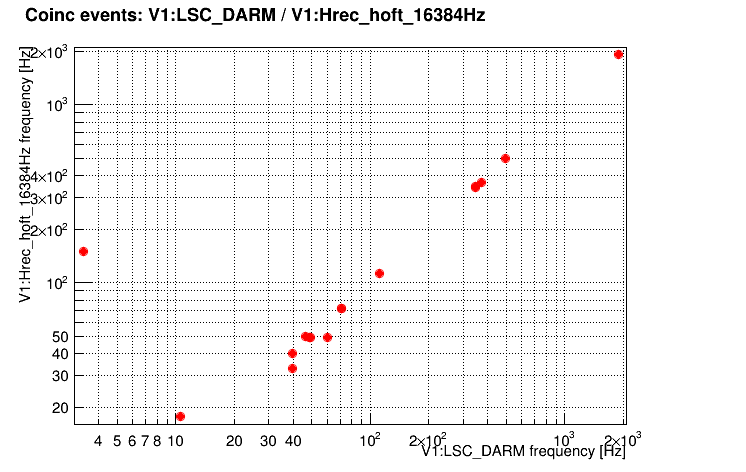
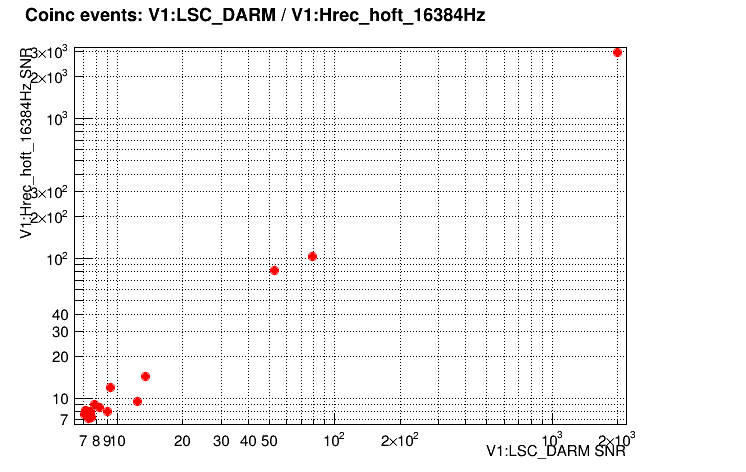
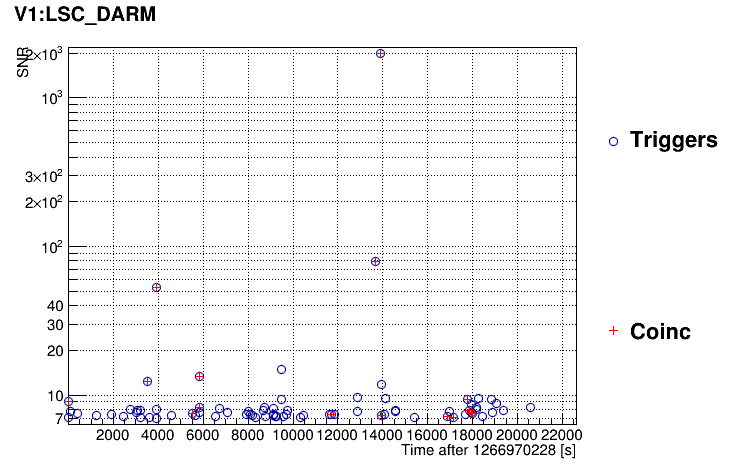
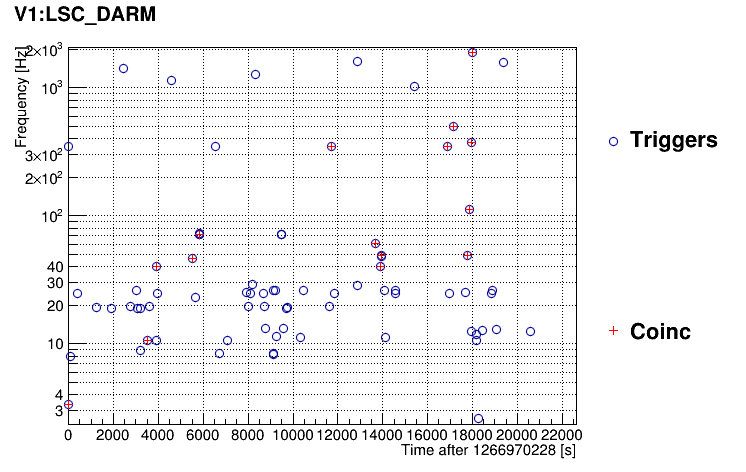
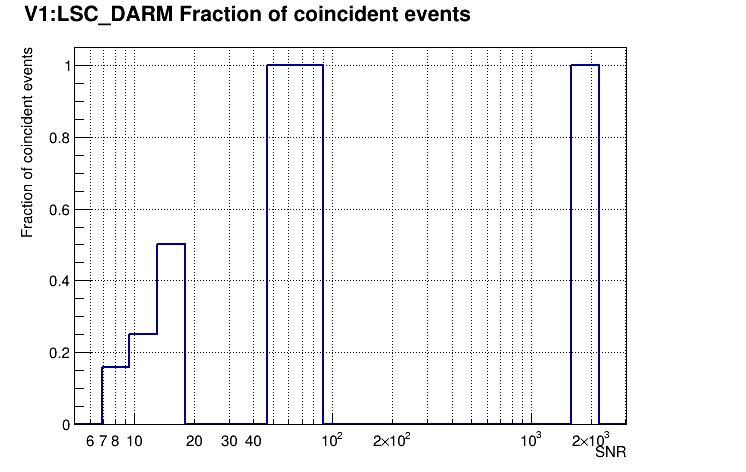
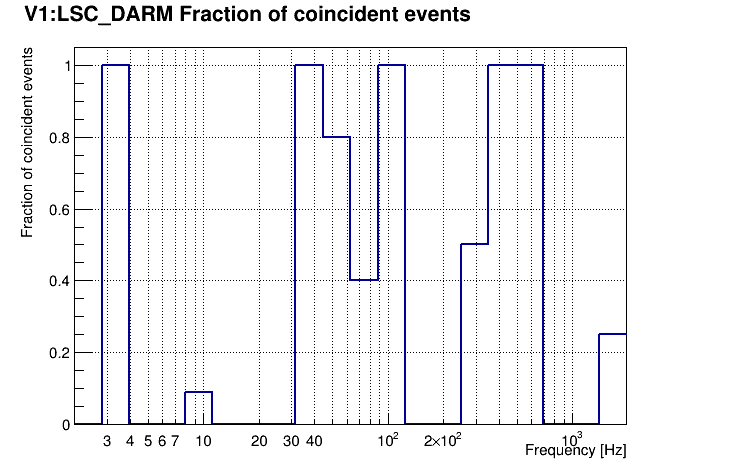
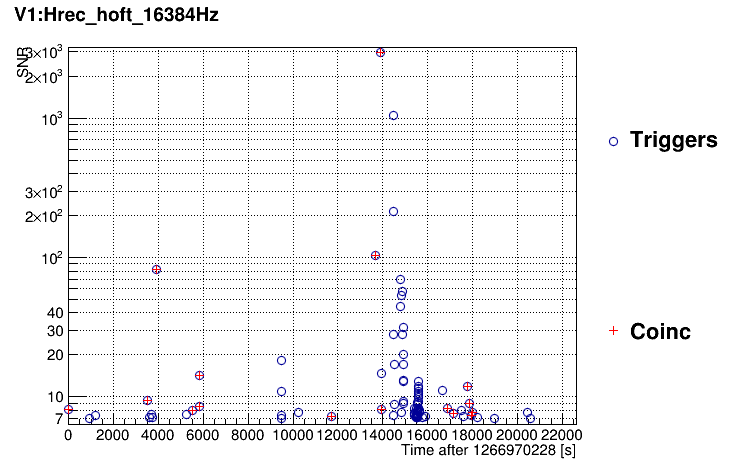
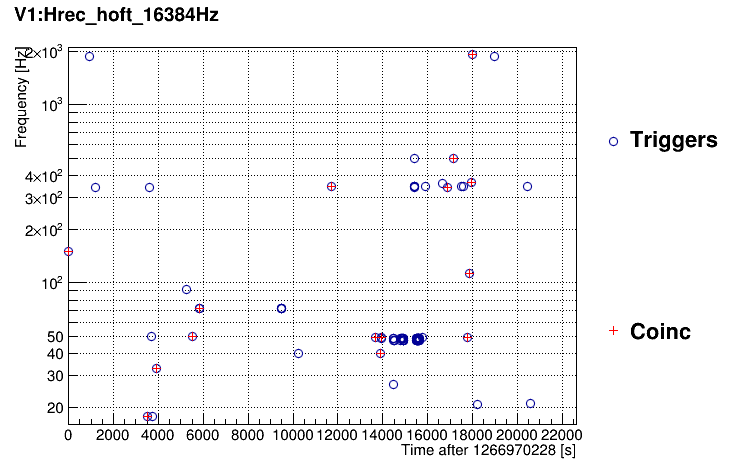
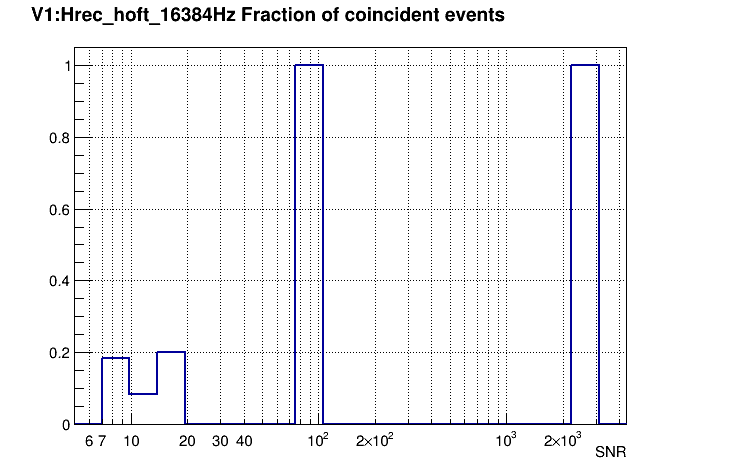
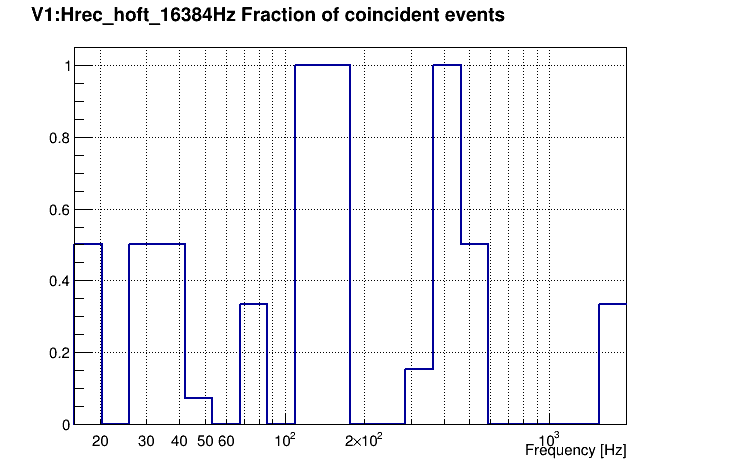
The omicron-coinc command comes with many additional options. Type omicron-coinc to get the full list of options.
| int main | ( | int | argc, |
| char * | argv[] | ||
| ) |
Main program.
| void PrintUsage | ( | void | ) |
Print the program usage message.
[omicron-coinc-usage]
[omicron-coinc-usage]